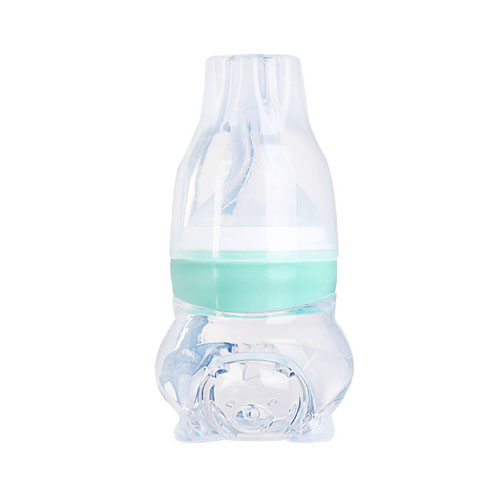How do you use a baby feeder bottle?
2023-12-28
Wash your hands thoroughly before handling the baby bottle and its components.
Ensure that the LSR Baby Anti Choking Liquid Feeder, nipple, and any other parts that come in contact with the milk are clean and sterilized. You can use a bottle sterilizer, boil the items in water, or follow the manufacturer's recommendations for cleaning.
Assemble the LSR Baby Anti Choking Liquid Feeder by attaching the nipple securely to the bottle. Make sure that the parts are properly aligned and screwed on tightly.
If using formula, follow the instructions on the packaging to measure the appropriate amount of formula and add it to the bottle. If using breast milk, measure the desired amount and pour it into the bottle.

Ensure that the formula or breast milk is at a suitable temperature. It should be body temperature or slightly warmer. Test the temperature by placing a few drops on the inside of your wrist.
Find a quiet and comfortable place to feed your baby. Hold your baby in a position that supports their head and allows for easy swallowing.
Hold the LSR Baby Anti Choking Liquid Feeder at an angle, ensuring that the nipple is filled with milk to prevent air intake. The nipple should be partially filled to minimize the risk of the baby swallowing air.
Gently offer the bottle to your baby. Allow them to latch onto the nipple and start sucking. Make sure the nipple is filled with milk during feeding to prevent the baby from swallowing air.
Watch your baby during the feeding to ensure they are swallowing comfortably and not showing signs of distress. Hold the bottle at a consistent angle to maintain a steady flow of milk.
Choosing the Right Nipple: Select a nipple with a flow rate appropriate for your baby's age to ensure they can comfortably manage the milk flow.
Responsive Feeding: Allow your baby to set the pace of feeding. Avoid propping the bottle, and engage in eye contact and interaction during feeding.
Transitioning to Solids: As your baby grows, you can introduce age-appropriate solid foods alongside continued bottle or breastfeedings.
Remember that each baby is unique, so it may take some time to find the feeding routine that works best for you and your baby. Always consult with your pediatrician for personalized guidance on feeding and nutrition.





